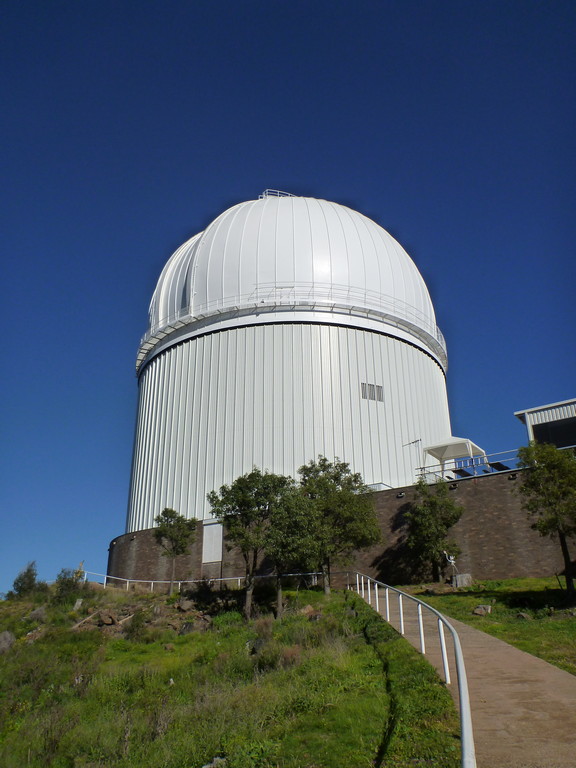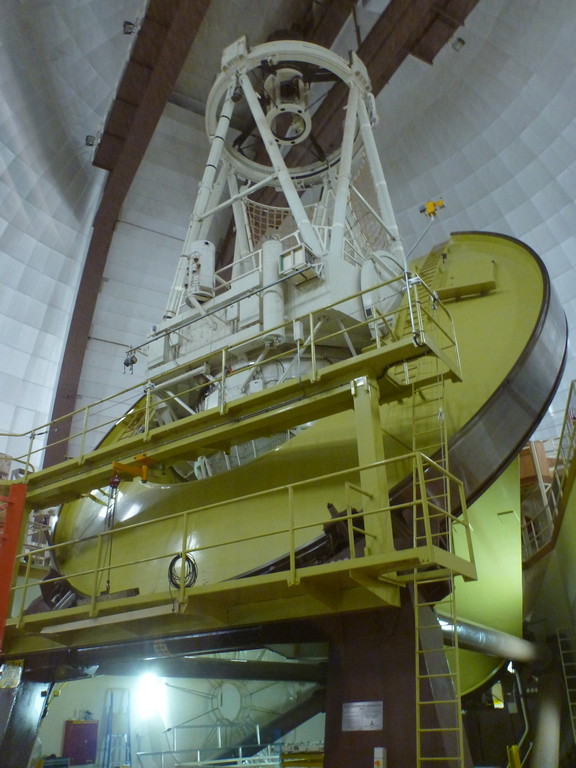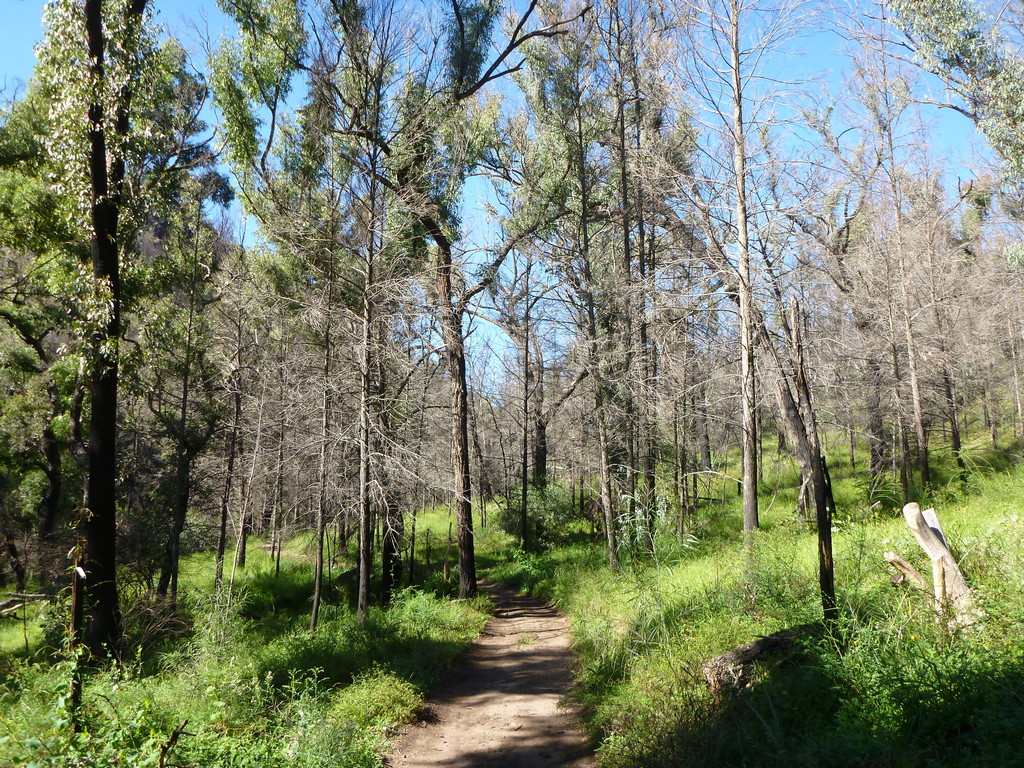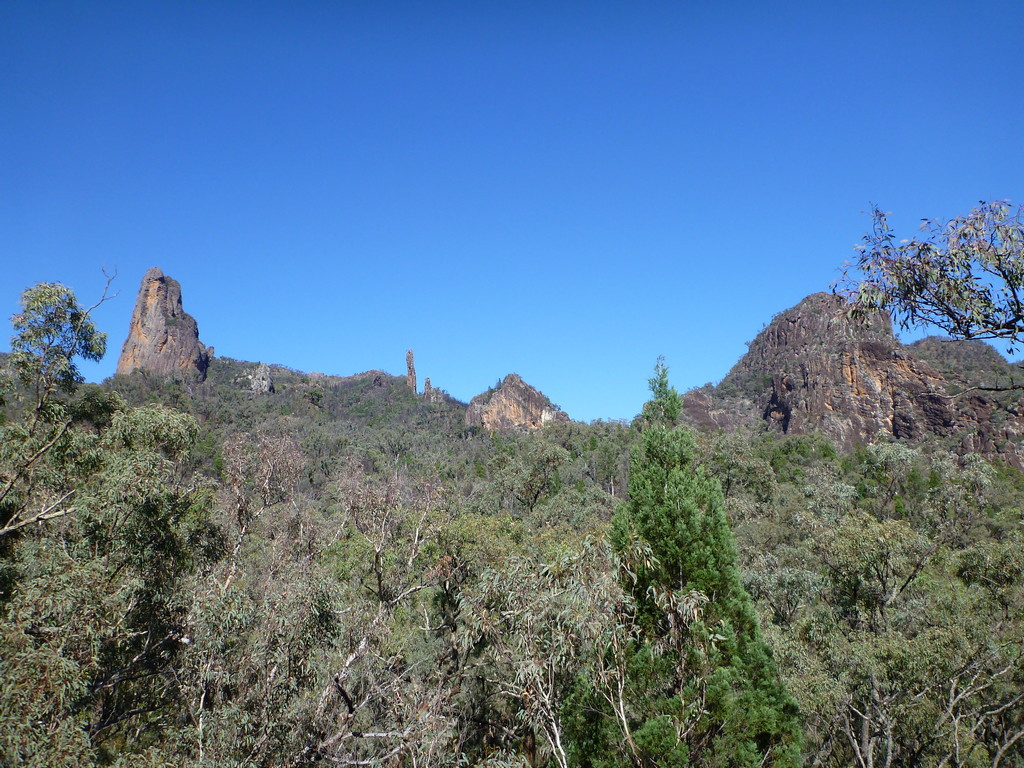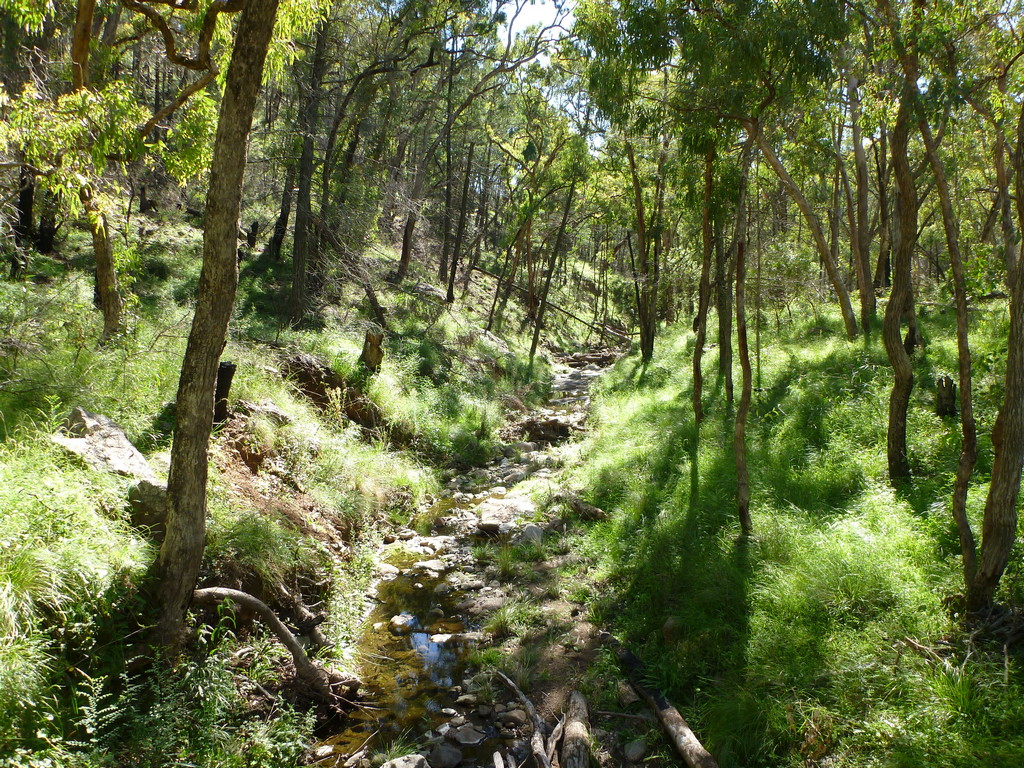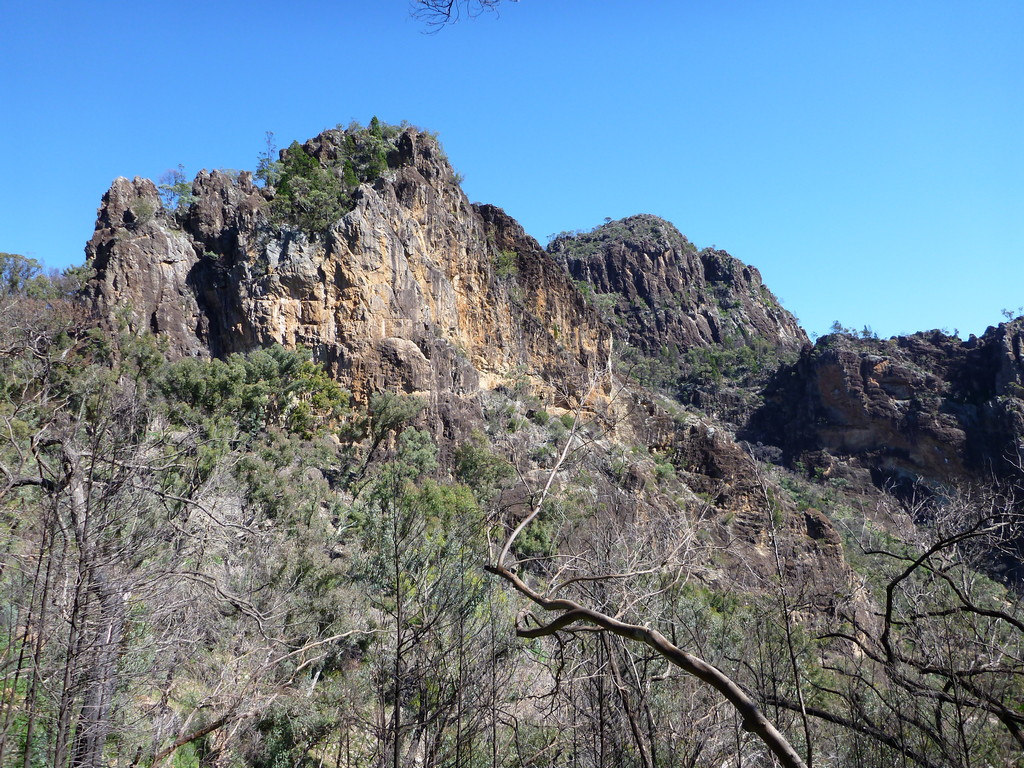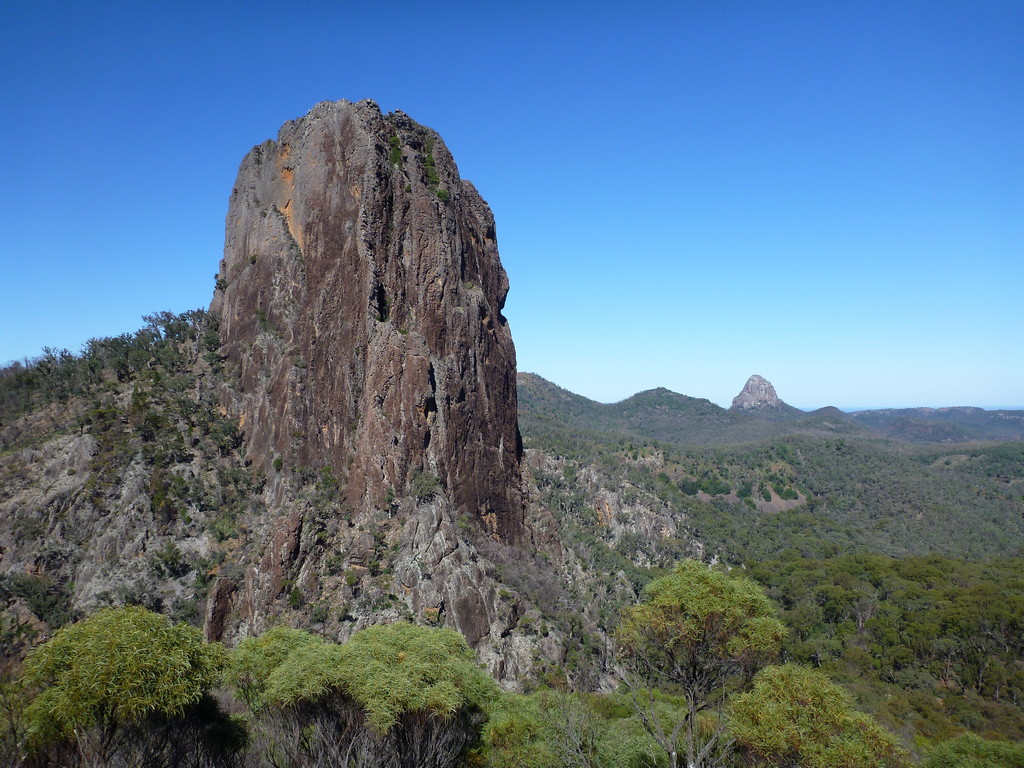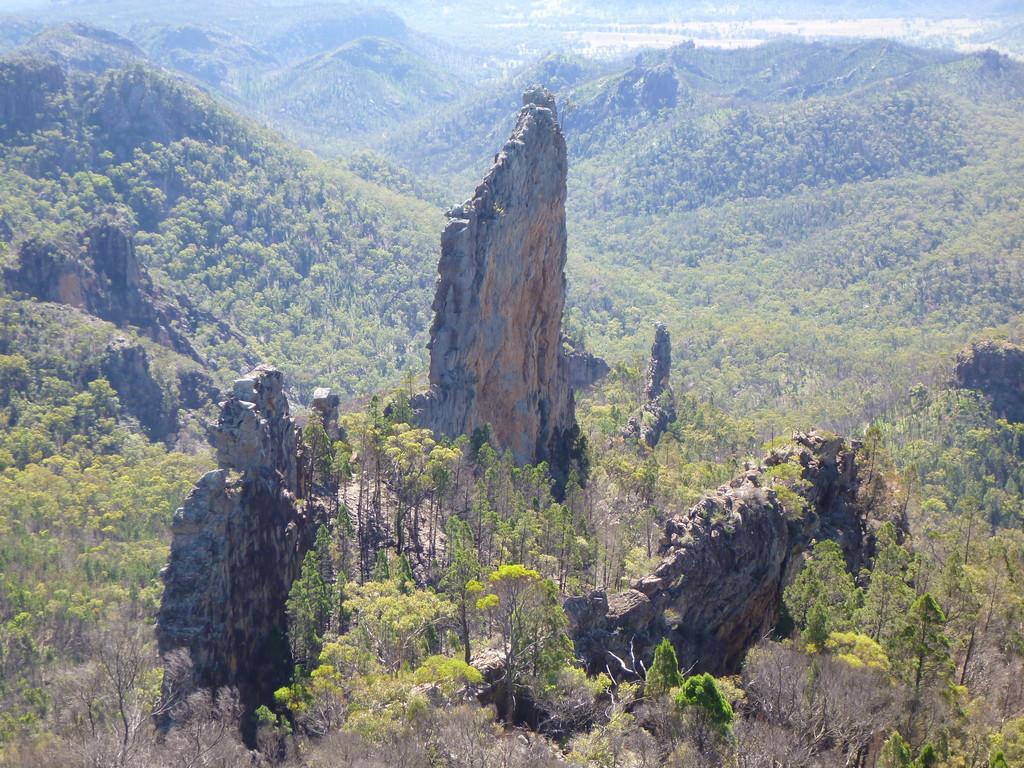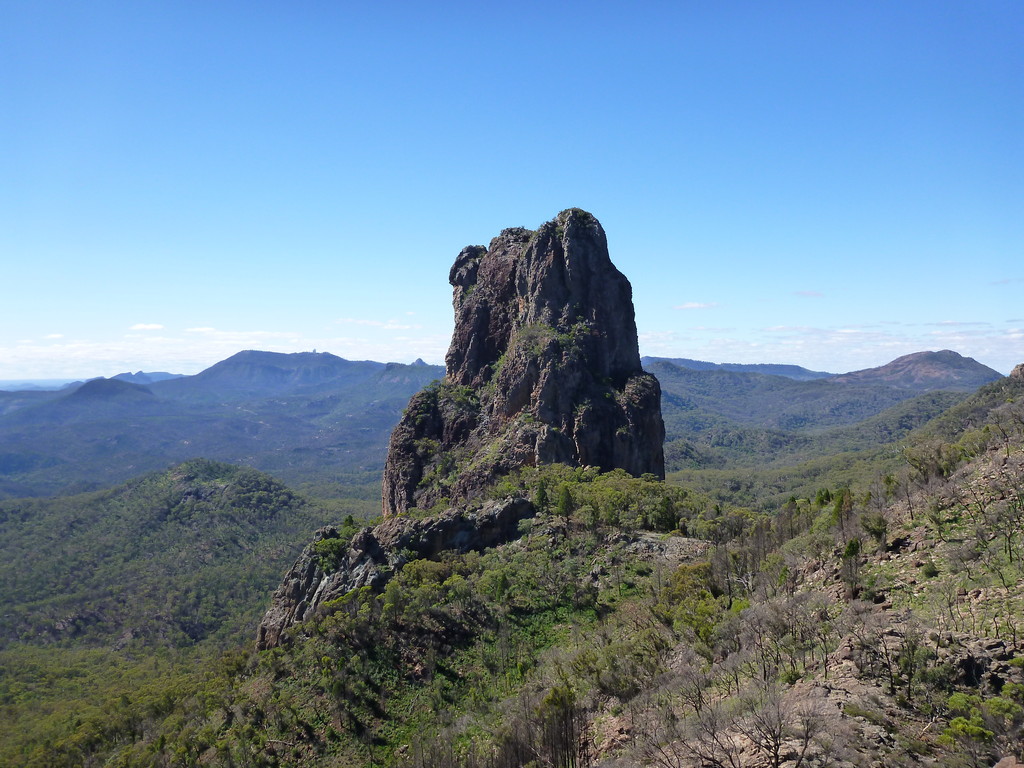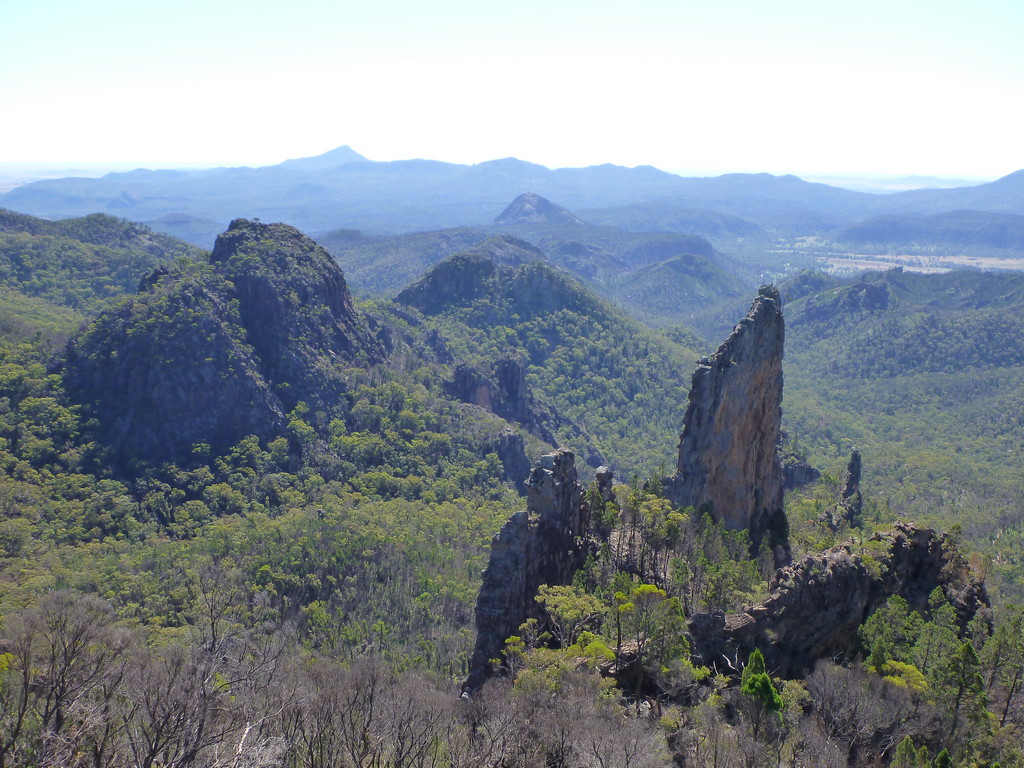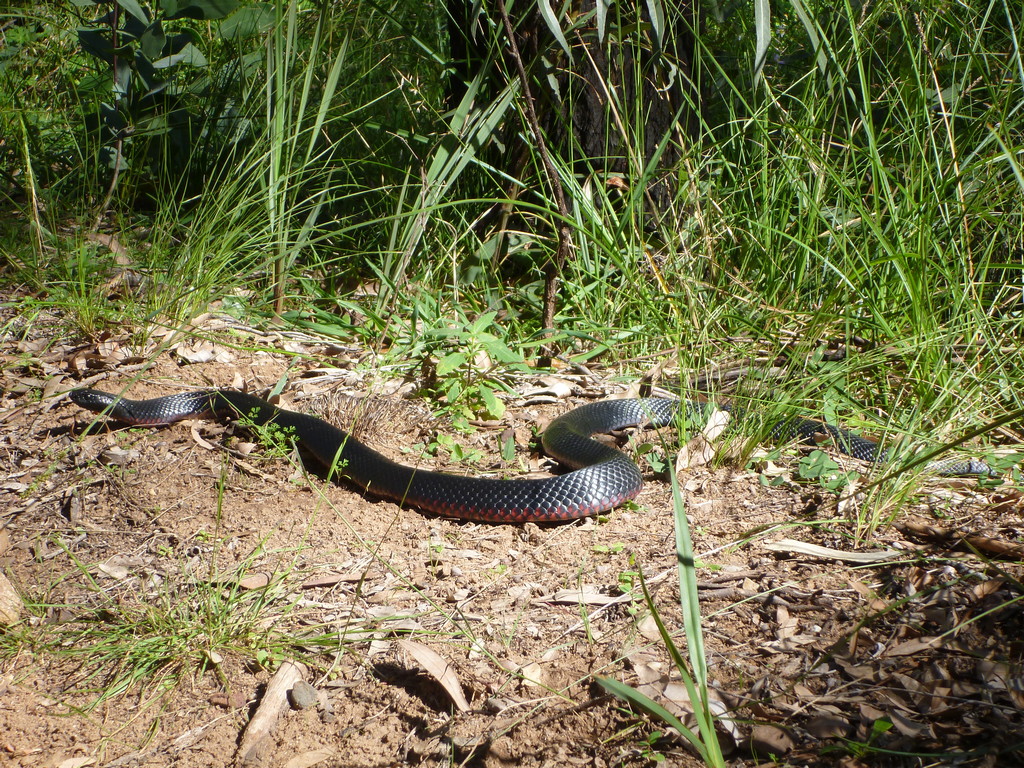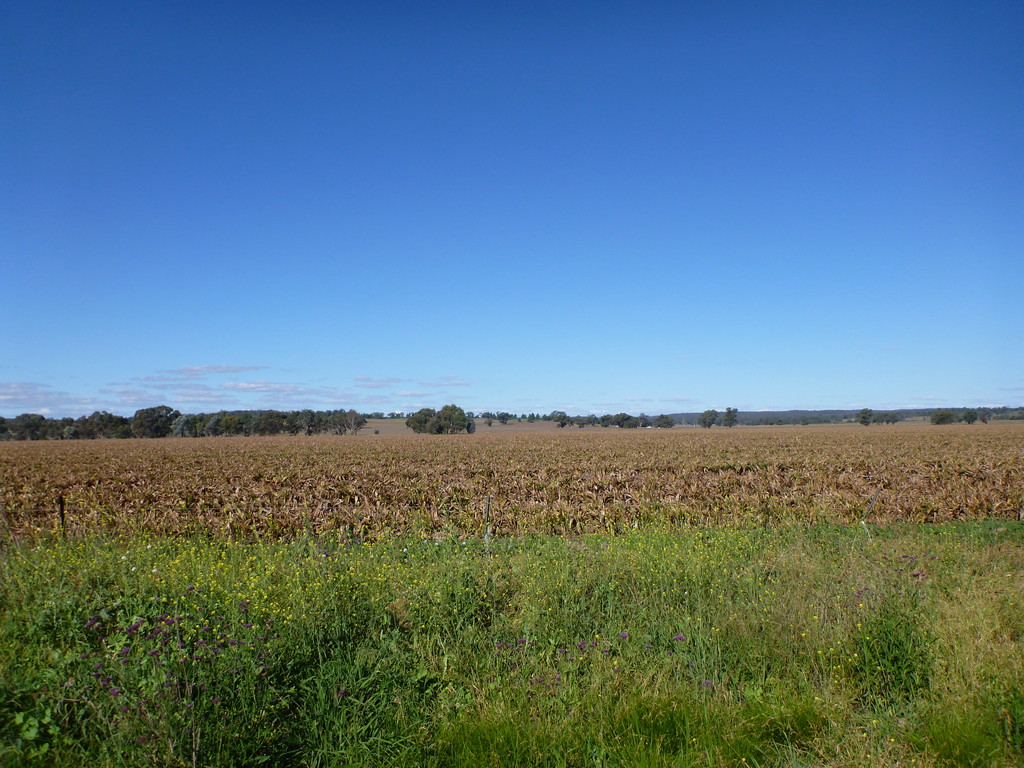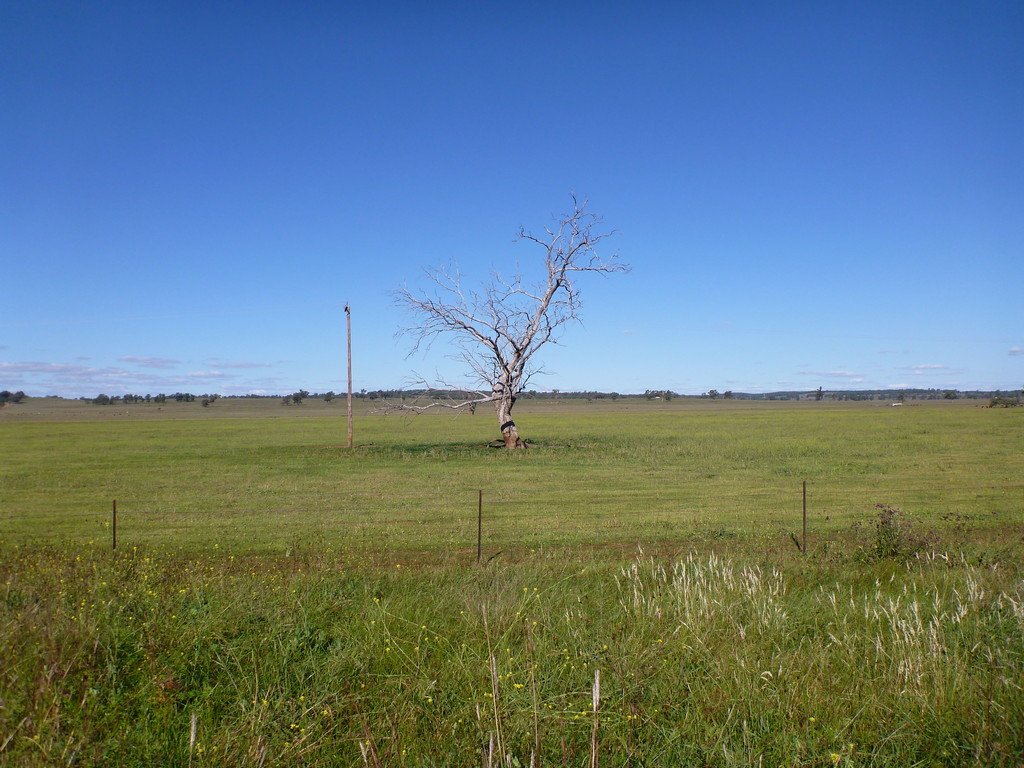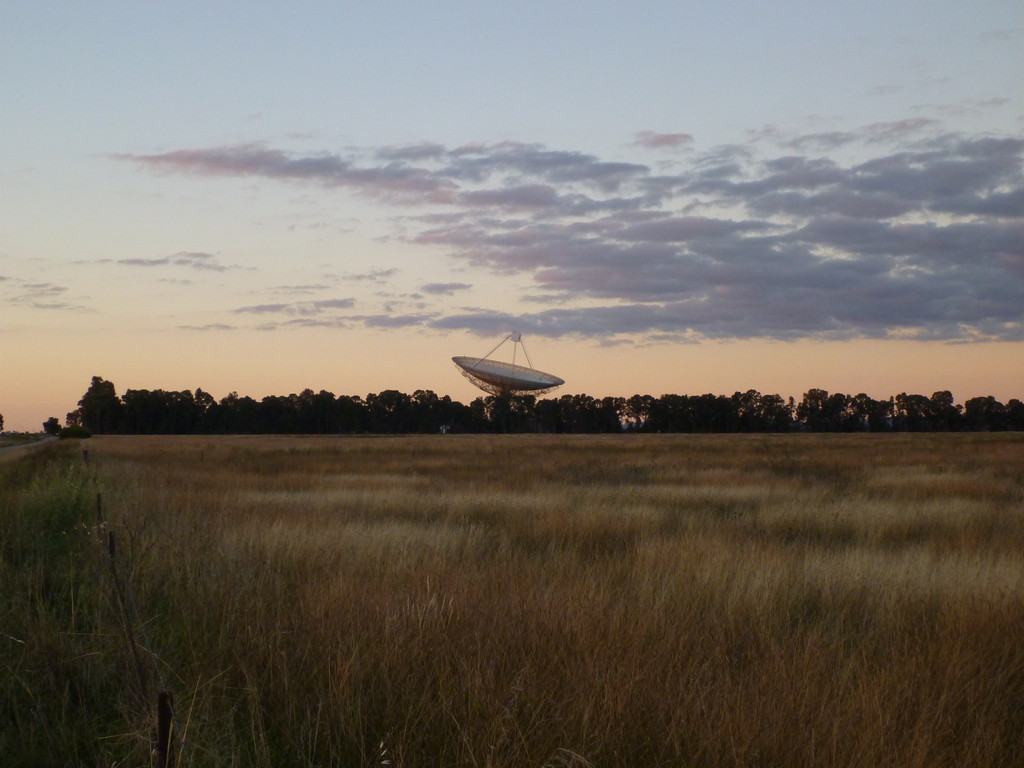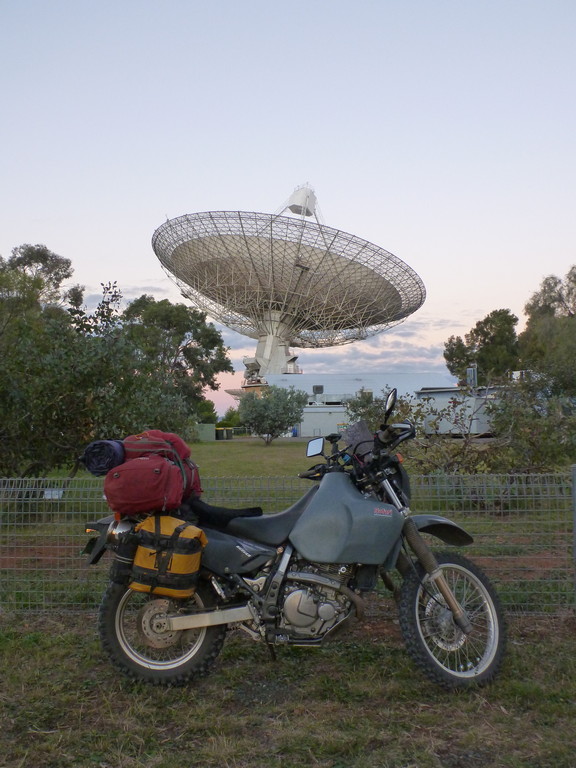Leaving Coonabarabran in the morning, I headed west into the Warrumbungle National Park. This is a mountain range formed as the remnants of an ancient extinct volcano – with the hard igneous rock jutting out sharply in strange eroded patterns.
The first feature of this area is the Siding Spring Observatory, home to over a dozen large telescopes including Australia’s biggest optical-spectrum telescope, clocking in at 3.9m lens diametre.
Further in to the park, I pulled off the road and did a 12km hike up into the range to see the more spectacular formations. It was hard going at times, with a total elevation change of just over 500m! The low areas still bore the scars of devastating bushfires 18 months ago, and a lot of the facilities and trails in the area are still closed.
From the top of the walk, there was an amazing 360 degree panorama over the entire park. The first feature is called the breadknife, and is only a few metres wide yet easily 100 metres tall.
I encountered another bloody snake on the way back down – this time a red-bellied black snake. Very poisonous, but fortunately unlike brown snakes they’re not at all aggressive, and will almost always slither away.
Back on the road, I was passing through the lush farm land of New South Wales’ central west.
Rolling through many towns including the major centre of Dubbo, I arrived at my aim just on dusk – the Parkes radio telescope, known as “the dish”. This site was made famous during the moon landings, as the site to actually receive and re-broadcast the astronauts’ transmission.
I found a room for the night in Parkes, a town strangely obsessed with Elvis – they have an annual Elvis festival and gathering of impersonators every year.


